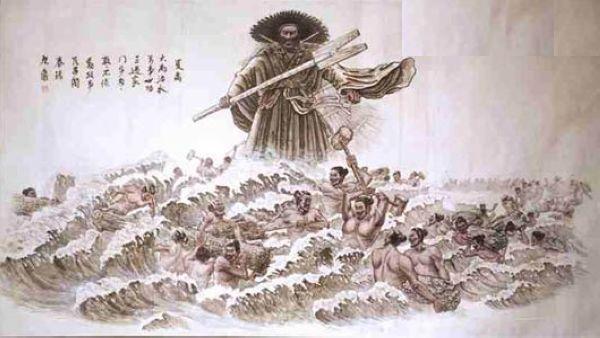Archive for the ‘Chinese (Historical) Figures’ Category
Wu Zetian: the First Empress in China
Wu Zetian was born in 624. Her parents were rich and of noble families. As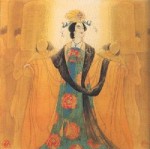 a child she was taught to write, read the Chinese classics and to play music.
a child she was taught to write, read the Chinese classics and to play music.
At the age of fourteen, this accomplished child became a concubine to Emperor Taizong. She was given the title Cairen (a fifth grade concubine of the Tang Dynasty). Her perspicacity set her apart from others in the palace and her knowledge of literature and history and talent quickly found favor with the emperor. He bestowed Wu Zetian the title Meiniang which means “charming lady” and she was assigned to work in the imperial study. Here she was introduced to official documents and quickly became acquainted with affairs of state.
In 649, when she was twenty-six years old, the emperor died. He was succeeded by his son Gaozong and following the established court procedures, the old emperor’s concubines were sent to a nunnery to live out their days. Emperor Gaozong was fascinated by Wu’s talent and beauty and frequently visited her in the nunnery. After a period of some two to three years, she was summonsed to the palace and given the title Zhaoyi, the second grade concubine of the new emperor.
Wu gradually earned Gaozong’s trust and favor. After giving birth to two sons, she began to compete with Empress Wang and the senior concubine Xiaoshu for the favor of the emperor. To achieve her goals, Wu Zetian horrifically killed off other favorite concubines of the emperor, and to get rid of the empress, she murdered her own infant daughter and blamed it on Empress Wang. Of all of these crimes, the emperor knew nothing off.
In 655, Gaozong promoted Wu to the position of Empress in place of the now disgraced Wang. Before long both the former empress and the concubine, Xiaoshu, were put to death due to Wu Zetian’s scheme and Wu’s position was finally secured. Then Wu Zetian began her political career in earnest for her goal was to become the first female-emperor of China.
Great Yu Controlled the Flood
Yu replied, “Then give me some magic earth and your permission, and allow me to complete my father’s work.” Secretly, the Yellow Emperor agreed that the world was a big, muddy mess. None of his gods had any ideas about how to stop the raging rivers that flooded the country year after year. Kun had tried to divert the rivers with dams but had failed. Therefore, every spring, the rivers continued to burst their banks, drown innocent people, and destroy property. Furthermore, the emperor was pleased that Yu had asked for the magic earth, rather than attempt to steal it. At last, the emperor said to Yu, “Pile the magic dirt on the back of this tortoise and go forth to control the floodwaters. With the help of this tortoise and a winged dragon, rebuild the world in your father’s vision.”
The ruling king in this story is the Yellow Emperor, a good leader who struggled with the mighty rivers that flooded the country each year. According to ancient myths, the Yellow Emperor had a pile of magic dirt that could absorb water. His grandson Kun stole the magic earth (in Chinese: Xi-Rang) and dropped little balls of dirt wherever he went. The dirtballs swelled into huge, fertile mounds of soil as they absorbed water. The peasants then scooped up the fertile soil and spread it over their sopping fields. Kun also built dams to control the flooding of the country’s unpredictable rivers. Unfortunately, the dams often burst and flooded the land again. When the emperor found out about the theft, he was furious and sent Zurong the fire god, now the chief executioner, to track down and kill his grandson Kun. Zurong chased Kun to the ice glaciers of the arctic and struck him dead with a flaming sword. Kun’s body lay trapped and frozen in the ice.
Three years later, the Yellow Emperor sent Zurong the fire god to check on his grandson Kun’s body. When he reached the spot where Kun was buried in the ice, the fire god was amazed to find that Kun’s body was perfectly preserved in the ice. As he hacked open the glacier with his sword, Zurong accidentally split open Kun’s body. A huge Loong flew out of the corpse. Terrified, Zurong fled to warn the Yellow Emperor. The huge Loong became Yu, son of Kun, who was born with all the memories and knowledge of his father.
Like his father, Yu was filled with compassion for the farmers. However, unlike his father, he did not wish to incur the wrath of the Yellow Emperor. Immediately, he hurried to the Yellow Emperor’s court. Bowing before the ruler, Yu pleaded for the lives of the farmers, “Your majesty, I beg you to pity the people for their suffering. Please help them restore their land.” The Yellow Emperor was not impressed with Yu’s pleas. He bellowed, “Do not forget that your father stole my magic earth and tried to restore the land without my permission!”
Yu replied, “Then give me some magic earth and your permission, and allow me to complete my father’s work.” Secretly, the Yellow Emperor agreed that the world was a big, muddy mess. None of his gods had any ideas about how to stop the raging rivers that flooded the country year after year. Kun had tried to divert the rivers with dams but had failed. Therefore, every spring, the rivers continued to burst their banks, drown innocent people, and destroy property. Furthermore, the emperor was pleased that Yu had asked for the magic earth, rather than attempt to steal it. At last, the emperor said to Yu, “Pile the magic dirt on the back of this tortoise and go forth to control the floodwaters. With the help of this tortoise and a winged dragon, rebuild the world in your father’s vision.”
Yu was curious about the size and shape of the earth. Therefore, before leaving the emperor’s court, he dispatched one of the lesser court gods to measure the country north/south and another god to measure the country east/west. Each returned to report exactly the same number: 233,500 li (three li make one mile) and 75 paces. Delighted, Yu created a map from the gods’ descriptions, which made the earth a perfect square. Then Yu divided the country into nine areas, or provinces. Only then did he begin his construction work.
Unlike his father, Yu was not content merely to build dams to control the rivers. Instead, he studied the shape of the land in each area. He observed the course of the rivers and planned their most natural route to the sea. To guide the rivers, Yu dug canals, carved tunnels, leveled hilltops, created dams, and formed lakes. In each area, Yu used the tail of the dragon to gouge out new channels for the rivers.
As he plodded across the country, Yu found 233,559 large holes in the earth. Year after year, water had bubbled up in these cavities and flooded the world. Now Yu plugged up the gaping holes with dirt and reeds, and dropped in magic dirt balls from the tortoise’s back to dry up the soggy earth caused by the floods.
When he worked, Yu often used the form of a human to avoid frightening the farmers. Even in his human form, he had an ugly face like an insect, with a mouth like the bottom of a crow’s beak and a long neck like a snake. The farmers did not care about his appearance, however. They loved him for his efforts on their behalf.
As Yu traveled across China, he named the tribal groups and recorded their customs: Leather-Skin people; Goat-Fur people; Oyster-and-Pearl people; Kingfisher?Green-Silk people; Grass-Skirt people; Felt-Tent people; Mountains-of-Jewels people; Dew-Drinkers; Red-Grain-Growers; Lacquer-Makers; Winged people; Short people; Deep-Set-Eyes people. He charted their land and collected samples of their soil as he traveled across the fifty rivers and mountains of China.
Wherever he went, Yu found happy families. Their happiness only made him aware of his own loneliness. Although Yu was married briefly, his wife and son both abandoned him because they had no fondness for digging dirt. With neither wife nor son by his side, Yu continued his work alone, with only the tortoise and the dragon for company. His hands were covered with sores and calluses. His skin was blackened and blistered from the sun. One leg shriveled and twisted as Yu limped around the rough terrain. Wherever he traveled, farmers hailed him as the Great Yu.
Their widespread affection caused the ruling emperor to choose Yu as the next emperor. It was thus that Yu became the founder and ruler of the Xia [She ah] dynasty. Soon plentiful grain harvests blessed the land. The rivers ran peacefully to the sea and did not overflow. The people lived happily in their villages and blessed the name of Yu in their joy and contentment.
Read the rest of this entry »
Outstanding scientist: Qian Xuesen
Brief introduction:
Qian Xuesen or Tsien Hsue-shen (December 11, 1911 – October 31, 2009), a native of Hangzhou,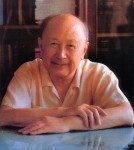 Zhejiang Province, went to the United States to study in 1935. In 1955 he returned to China, and in 1958 he joined the Communist Party. He served successively as Director of the Institute of Mechanics under the Chinese Academy of Sciences, Vice-Minister of the No. 7 Ministry of the Machine-building Industry, Vice-Minister of the State Commission on Science, Technology and Industry for National Defence and Chairman of the China Association for Science and Technology. He was also elected alternate member of the Ninth through Twelfth CPC Central Committees. Qian played a leading role in the research, manufacture and testing of carrier rockets, guided missiles and satellites, thus making outstanding contributions to the development of China’s aerospace industry.
Zhejiang Province, went to the United States to study in 1935. In 1955 he returned to China, and in 1958 he joined the Communist Party. He served successively as Director of the Institute of Mechanics under the Chinese Academy of Sciences, Vice-Minister of the No. 7 Ministry of the Machine-building Industry, Vice-Minister of the State Commission on Science, Technology and Industry for National Defence and Chairman of the China Association for Science and Technology. He was also elected alternate member of the Ninth through Twelfth CPC Central Committees. Qian played a leading role in the research, manufacture and testing of carrier rockets, guided missiles and satellites, thus making outstanding contributions to the development of China’s aerospace industry.
*** *** *** *** *** ***
Qian Xuesen, a famous scientist in modern China, is a member of Chinese Academy of Sciences and Chinese Academy of Engineering. He was bornin in Hangzhou City of Zhejiang Province in December 1911. Qian graduated form Shanghai Jiaotong University in 1934. In 1935, he went to the United State for advanced study in MIT (Massachusetts Institute of Technology). After receiving master’s degree in MIT, Qian went to study in California Institute of Technology. In 1939, Qian received PhD degrees of both aerospace and mathematics and left the school to be a teacher, as well as a researcher studying the applied mechanics and rocket and missile theories.
Qian returned to China in 1955. After his return, Qian has served successively as director-general with the mechanics institute of Chinese Academy of Sciences, deputy director-general and director-general with the fifth research institute of the State Defense Ministry, vice chairman with the Seventh Design and Research Institute The Ministry of Machinery Industry, deputy director-general with the Commission of Science, Technology and Industry for National Defense, president with the 3rd China Association for Science and Technology, vice president with the 6th to the 8th Chinese People’s Political Consultative Conference (CPPCC). Currently, Qian is the senior consultant with the Commission of Science and Technology of the General Equipment Ministry of the People’s Liberation Army, honorary president with China Association for Science and Technology. In 1957, Qian won the first prize of the natural science by Chinese Academy of Sciences, in 1979, the outstanding alumnus prize by California Institute of Technology, in 1985, first prize of national advanced technology awards, in 1989, the title of “World’s Celebrity for Sciences and Engineering”, and in 1991, China’s outstanding scientist with outstanding achievements and the nation’s first-grade medal for heroic models.
In 1956, Qian put forward “Proposal on the Development of China’s Aviation Industry for National Defense” and assisted Zhou Enlai, the then premiere, and Marshal Nie Rongzheng to prepare the establishment of China’s first missile and rocket R&D structure, the Fifth Research Institute of State Ministry of Defense. In October 1956, Qian assumed office of director-general with the fifth research institute. Henceforth, Qian has long been in charge of the chief technological officer with the R&D of China’s missile, rocket and spacecraft, and has contributed greatly to the establishment and development of China’s missile, rocket and spacecraft undertakings. Qian is a forerunner pioneering the development of China’s aerospace science and technology. He has been honored as “Father of China’s Missile“.
Read the rest of this entry »
Lu Xun (Zhou Shuren)
“For all of ignorant people of a nation, even if their body is somehow strong, somehow grand, even then they can only make meaningless displays [of this “strength”]. [As for] the multitude of constituents and observers, however many may die from [this] sickness, this is [still] not to be considered as unfortunate.”
From the preface of Lu Xun’s work Na Han (Call to Arms)
Note: Lu Xun was a doctor before he became a writer. Once he saw on a film a Chinese being executed by Japanese while many other Chinese were watching this “spectacular event”. This made him felt that saving the “souls” of people is more important than saving their bodies.
Lu Xun, was the pen name of Zhou Shuren (September 25, 1881 – October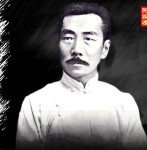 19, 1936) is one of the major Chinese writers of the 20th century. Considered by many to be the founder of modern Chinese literature, he wrote in baihua (the vernacular) as well as classical Chinese. Lu Xun was a short story writer, editor, translator, critic, essayist and poet. In the 1930s he became the titular head of the Chinese League of Left-Wing Writers in Shanghai.
19, 1936) is one of the major Chinese writers of the 20th century. Considered by many to be the founder of modern Chinese literature, he wrote in baihua (the vernacular) as well as classical Chinese. Lu Xun was a short story writer, editor, translator, critic, essayist and poet. In the 1930s he became the titular head of the Chinese League of Left-Wing Writers in Shanghai.
Lu Xun’s works exerted a very substantial influence after the May Fourth Movement to such a point that he was lionized by the Communist regime after 1949. Mao Zedong himself was a lifelong admirer of Lu Xun’s works. Though sympathetic to the ideals of the Left, Lu Xun never actually joined the Chinese Communist Party. Lu Xun’s works are known to English readers through numerous translations, especially Selected Stories of Lu Hsun translated by Yang Hsien-yi and Gladys Yang.
Early life
Born in Shaoxing, Zhejiang province, Lu Xun was first named Zhou Zhangshou, then Zhou Yucai, and finally himself took the name of Shùrén, figuratively, “to be an educated man”.
The Shaoxing Zhou family was very well-educated, and his paternal grandfather Zhou Fuqing held posts in the Hanlin Academy; Zhou’s mother, née Lu, taught herself to read. However, after a case of bribery was exposed – in which Zhou Fuqing tried to procure an office for his son, Lu Xun’s father, Zhou Boyi – the family fortunes declined. Zhou Fuqing was arrested and almost beheaded. Meanwhile, a young Zhou Shuren was brought up by an elderly servant Ah Chang, whom he called Chang Ma; one of Lu Xun’s favorite childhood books was the Classic of mountains and seas.
His father’s chronic illness and eventual death during Lu Xun’s adolescence, apparently from tuberculosis, persuaded Zhou to study medicine. Distrusting traditional Chinese medicine (which in his time was often practised by charlatans, and which failed to cure his father), he went abroad to pursue a Western medical degree at Sendai Medical Academy (now medical school of Tohoku University) in Sendai, Japan, in 1904.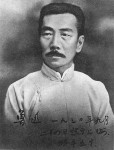
Education
Lu Xun was educated at Jiangnan Naval Academy (1898-99), and later transferred to the School of Mines and Railways at Jiangnan Military Academy. It was there Lu Xun had his first contacts with Western learning, especially the sciences; he studied some German and English, reading, amongst some translated books, Huxley’s Evolution and Ethics, J. S. Mill’s On Liberty, as well as novels like Ivanhoe and Uncle Tom’s Cabin.
On a Qing government scholarship, Lu Xun left for Japan in 1902. He first attended the Kobun Gakuin (Kobun Institute) (Hongwen xueyuan), a preparatory language school for Chinese students attending Japanese universities. His earliest essays, written in Classical Chinese, date from here. Lu also practised some jujutsu.
Lu Xun returned home briefly in 1903. Aged 22, he complied to an arranged marriage with a local gentry girl, Zhu An. Zhu, illiterate and with bound feet, was handpicked by her mother. Lu Xun possibly never consummated this marriage, although he took care of her material needs all his life.
Read the rest of this entry »
